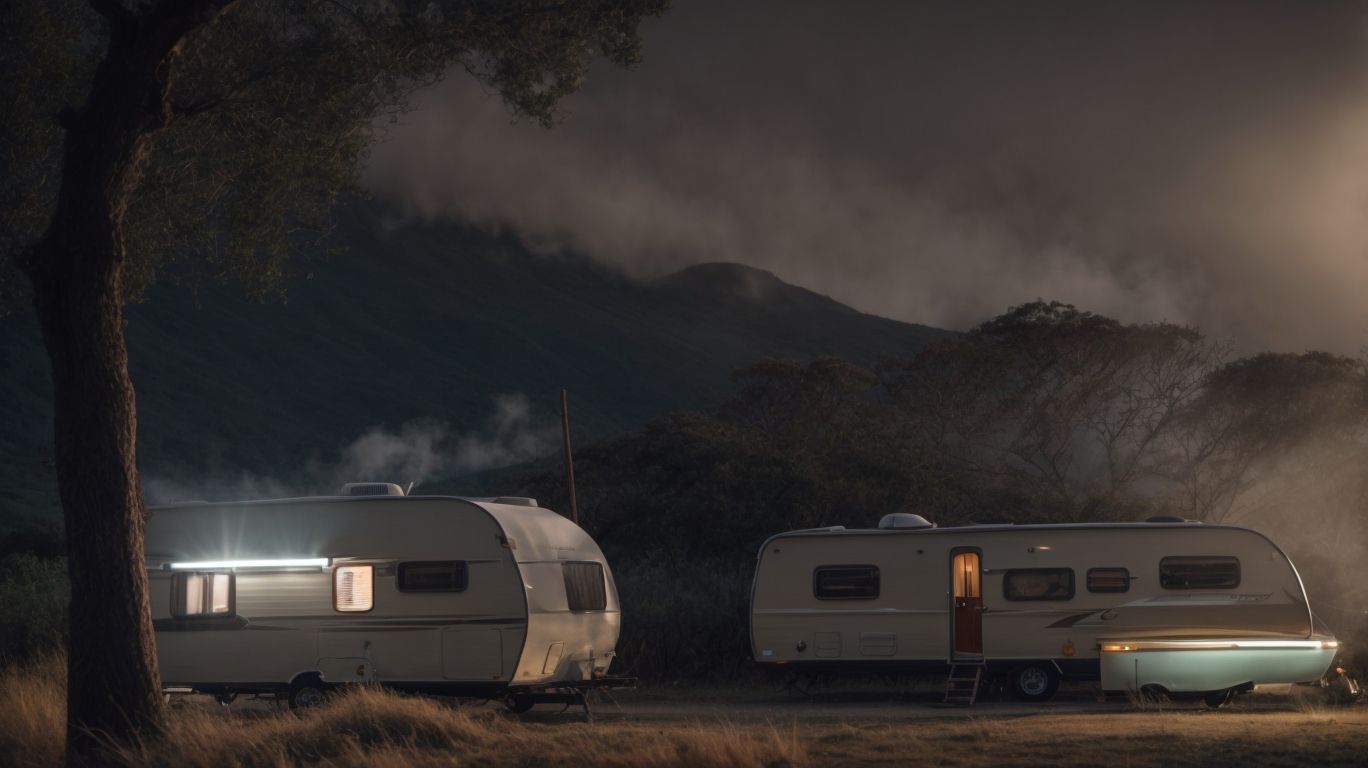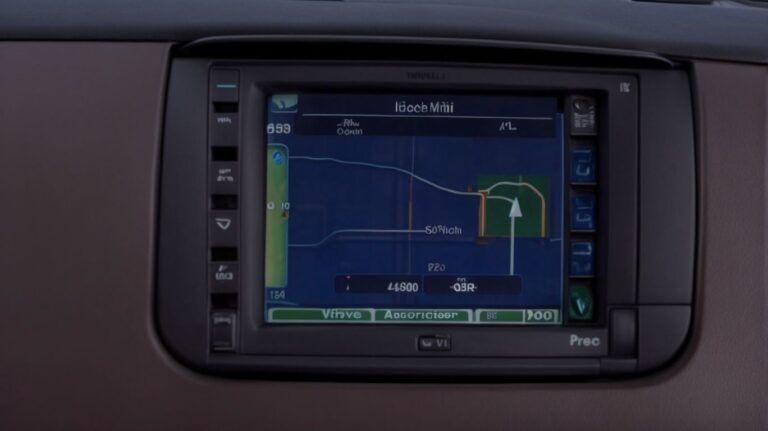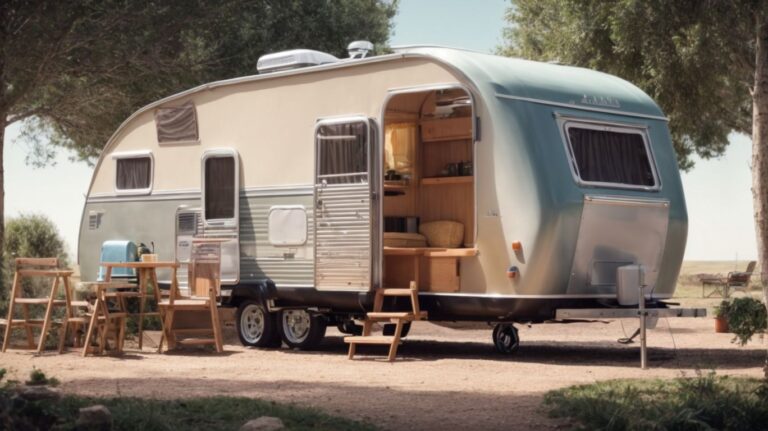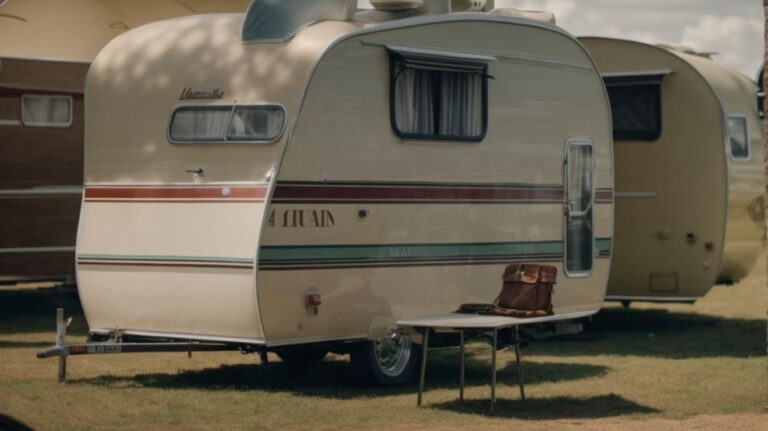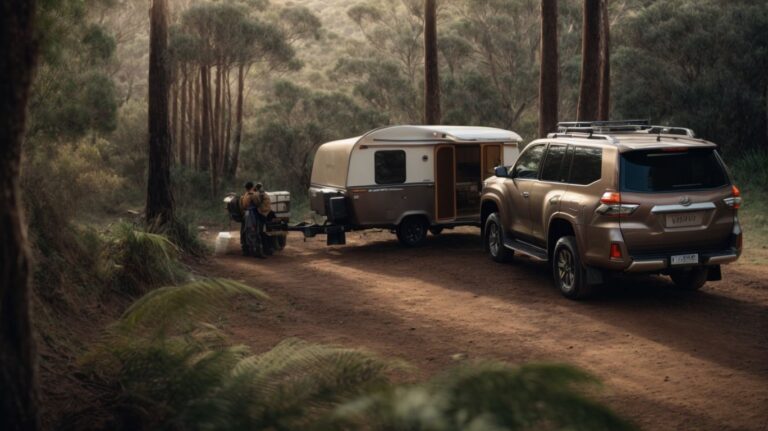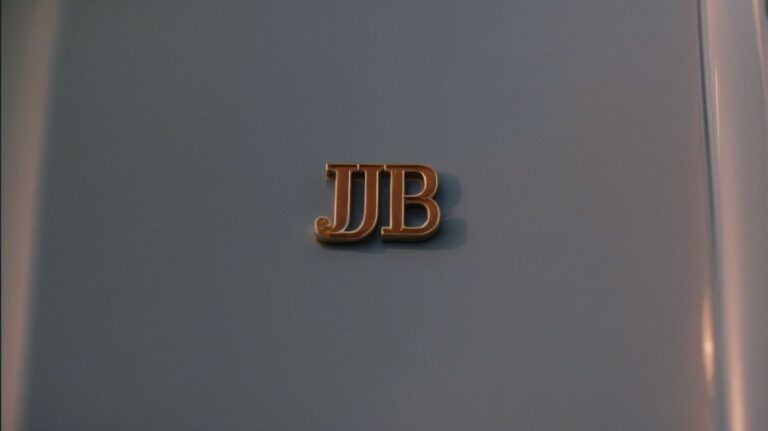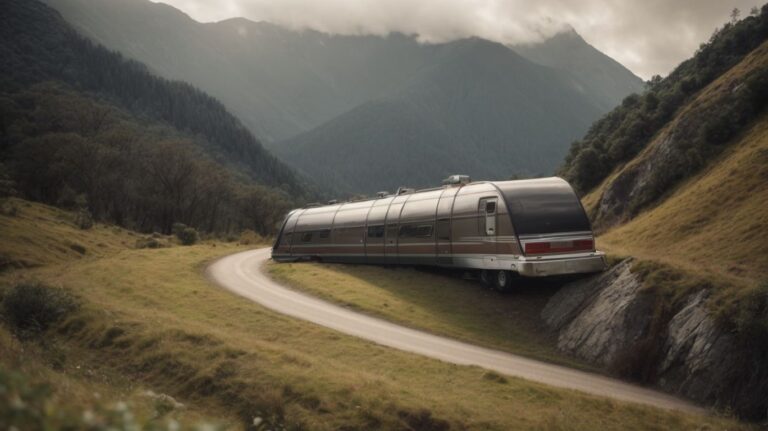The Importance of Reverse Lights for Caravans: Safety and Legal Requirements
Reverse lights are a crucial safety feature for caravans, providing improved visibility, increased safety, and easier maneuvering.
We will discuss the legal requirements for reverse lights on caravans, the consequences of not having them, how to install them, and tips for using them safely.
Learn everything you need to know about reverse lights for caravans.
Key Takeaways:
What Are Reverse Lights?
Reverse lights, also known as backup lights, are an essential safety feature in vehicles, emitting a bright white light to illuminate the area behind the vehicle when reversing.
These lights play a crucial role in enhancing visibility for both the driver and other road users during reversing maneuvers, reducing the risk of accidents. Commonly, halogen bulbs were used for reverse lights, providing a decent level of brightness. With advancements in technology, many vehicles now come equipped with LED lights for their reverse lights. LED lights offer numerous advantages, including faster illumination, longer lifespan, lower energy consumption, and increased brightness, making them a popular choice for modern vehicles.
Why Are Reverse Lights Important for Caravans?
Reverse lights play a crucial role in enhancing safety and visibility for caravans, particularly during reversing maneuvers where the risk of accidents is higher due to limited visibility.
When a caravan is reversing, the driver’s visibility can be significantly impaired, making it challenging to see obstacles, pedestrians, or other vehicles. In such situations,
reverse lights provide a warning signal to others on the road, alerting them to the movement of the caravan. This not only helps in preventing accidents but also aids in complying with safety regulations by ensuring that the vehicle is easily noticeable. The increased visibility offered by reverse lights improves overall road safety by reducing the likelihood of collisions and ensuring smoother traffic flow.
Improved Visibility
Enhancing visibility is one of the primary benefits of installing effective reverse lights on caravans, ensuring that the surrounding environment and obstacles are clearly illuminated during reversing.
Such enhanced visibility can be particularly crucial when maneuvering a caravan in tight spaces such as crowded campgrounds, dimly lit alleys, or in obscure parking lots. A caravan driver relying solely on their side mirrors might miss small objects or even other vehicles while reversing. With the aid of bright and efficient reverse lights, the driver can have a clear view of what lies behind them, reducing the risk of collisions. This added illumination not only enhances safety for the driver and their passengers but also for pedestrians and other vehicles nearby.
Increased Safety
Reverse lights contribute significantly to the safety standards of caravans, acting as a warning system for other motorists and pedestrians when the vehicle is in reverse gear.
These lights have a crucial role in communicating the intention of movement to those around, especially in busy parking lots or congested streets. By complying with regulatory standards, reverse lights ensure that the vehicle’s actions are visible to others, reducing the risk of collisions or accidents. This visual warning system enhances road safety by giving clear indications of the vehicle’s direction, allowing pedestrians and other drivers to adjust their movements accordingly. The effectiveness of reverse lights lies in their ability to prevent potential hazards and create a safer environment for everyone on the road.”
Easier Maneuvering
Reverse lights facilitate easier maneuvering for caravan drivers by providing additional illumination to aid in reversing, complementing other assistance systems like reverse cameras for a more seamless maneuvering experience.
Having well-functioning reverse lights is crucial for caravan owners, especially in low light situations where visibility is limited. The combination of reverse lights and modern technologies like reverse cameras creates a synergy that enhances the overall safety and convenience of the maneuvering process. With the increased visibility provided by reverse lights, drivers can confidently navigate through parking lots, campsites, and other tight spaces with greater ease.
What Are the Legal Requirements for Reverse Lights on Caravans?
Understanding the legal requirements for reverse lights on caravans is paramount to ensure compliance with the law and maintain road safety standards, with specific guidelines set by authorities such as Andrew Phillips.
Regulations regarding reverse lights vary across different regions, for instance, in the United States, the National Highway Traffic Safety Administration (NHTSA) mandates the installation of reverse lights on caravans to enhance visibility during reversing maneuvers.
In Australia, the Australian Design Rules (ADRs) outline specific lighting requirements for vehicles, including caravans, with strict guidelines on the placement and functionality of reverse lights.
Authorities like Andrew Phillips play a crucial role in enforcing these standards, ensuring that caravans comply with the necessary lighting regulations to promote road safety.
National Requirements
National requirements for reverse lights on caravans may vary, with some countries adopting standards set by the United Nations or specific automotive manufacturers like GM to ensure uniform safety protocols.
For instance, the United Nations Economic Commission for Europe (UNECE) has developed Regulation No. 48, which outlines the technical specifications for reverse lights on vehicles, including caravans, to enhance visibility during backing up maneuvers. This regulation stipulates criteria such as the luminous intensity, color, and positioning of these lights. Similarly, industry giants like General Motors have implemented their own stringent guidelines to guarantee consistent quality across their caravan models, often exceeding basic legal requirements for enhanced customer safety.
International Requirements
International requirements for reverse lights on caravans may align with standards like VSB 1 or adhere to specific regulations imposed by regions such as Queensland to harmonize safety practices across different jurisdictions.
These standards and regulations play a crucial role in ensuring consistent visibility and safety for drivers, pedestrians, and other road users when a caravan is reversing.
International standards like VSB 1 help manufacturers design caravan lighting systems that meet specified performance and quality benchmarks, enhancing overall safety on the roads.
In regions like Queensland, where specific regulations are in place, drivers can have confidence in the uniformity of safety measures regardless of where they are traveling.
What Happens If My Caravan Does Not Have Reverse Lights?
The absence of reverse lights on your caravan can pose significant risks, including the heightened possibility of accidents due to reduced visibility and legal repercussions for non-compliance with safety regulations.
Reverse lights on a caravan play a crucial role in enhancing visibility for both the driver and surrounding vehicles, especially during nighttime or low-light conditions. Without these lights, maneuvering the caravan in reverse becomes inherently dangerous, leading to a higher chance of collisions or unexpected incidents.
Failing to equip your caravan with reverse lights not only jeopardizes your safety and that of others on the road but also puts you at risk of legal penalties. Regulations mandate the installation of these safety features to ensure the well-being of all road users and promote accident prevention.
Risk of Accidents
The risk of accidents escalates when a caravan lacks functioning reverse lights, as diminished visibility during reversing maneuvers increases the chances of collisions with obstacles, other vehicles, or pedestrians.
Not having operational reverse lights significantly compromises the ability of drivers to accurately gauge their surroundings while reversing, leading to a high potential for incidents. In crowded camping sites or tight parking spaces, the absence of reverse lights can result in accidental collisions when backing up. At night or in low-light conditions, the lack of these lights poses an even greater danger, making it difficult for other road users to anticipate the caravan’s movements. Pedestrians or cyclists may unknowingly come into the path of a caravan without warning, further highlighting the critical role reverse lights play in ensuring overall safety.
Legal Consequences
The legal consequences of operating a caravan without the required reverse lights can result in penalties, fines, or legal action due to non-compliance with established safety regulations and traffic laws.
Reverse lights play a crucial role in ensuring the safety of both the caravan occupants and other road users. Lack of functioning reverse lights can lead to accidents, especially during nighttime or in low visibility conditions. Plus the risk of causing harm, not having operational reverse lights can result in legal trouble for caravan owners/operators.
Authorities enforce strict regulations regarding vehicle lighting to maintain road safety standards. Failure to comply with these regulations by neglecting to have functional reverse lights on a caravan can lead to citations, fines, or even legal action, depending on the severity and frequency of the violation.
How Can I Install Reverse Lights on My Caravan?
Installing reverse lights on your caravan can be achieved through either a DIY approach or by seeking professional installation services, ensuring proper wiring, bulb selection, and compliance with safety standards.
For DIY enthusiasts looking to take on this task themselves, start by gathering the necessary equipment including the reverse light kit, wire cutters, connectors, and electrical tape.
Next, locate the ideal position on your caravan for mounting the lights, ensuring they are positioned correctly for effective illumination when in reverse.
In terms of wiring, make sure to connect the lights to the vehicle’s reverse light circuit using the appropriate gauge of wire. Properly secure all connections with connectors and insulate them with electrical tape to prevent any potential shorts.
If opting for professional installation, consult with experienced technicians who can ensure that all wiring is done correctly and compliant with safety regulations. They will also help you select the right type of bulbs for optimal brightness and longevity.
DIY Installation
DIY installation of reverse lights on your caravan involves selecting the appropriate bulbs, ensuring correct wiring connections, and positioning the lights strategically for optimal visibility during reversing.
In terms of bulb selection, it’s crucial to opt for bulbs that are specifically designed as reverse lights and provide ample brightness. Look for LED bulbs that offer a bright, white light for enhanced visibility. Next, the wiring procedures should be tackled with caution. Ensure that you have the necessary tools such as wire strippers, crimp connectors, and electrical tape. Properly connect the wires to the power source while following the manufacturer’s instructions.
The placement techniques of the lights play a significant role. Place them at the rear of the caravan at a suitable height to avoid obstruction or damage, typically above the bumper. Aim for a downward angle to illuminate the area directly behind the vehicle effectively.
Professional Installation
Professional installation services for reverse lights on caravans offer expert assistance from establishments like RV Repair Centres, ensuring precise fitting, secure wiring, and integration with components like the Anderson plug for seamless functionality.
Opting for professional installation of reverse lights on your caravan not only guarantees a correctly calibrated setup but also ensures compliance with safety regulations. Specialized service providers like RV Repair Centres have the expertise to tackle complex wiring systems and guarantee a thorough installation process.
The inclusion of advanced features such as the Anderson plug further enhances the overall user experience by providing superior connectivity options, enabling a quick and reliable connection to a power source.
What Are Some Tips for Using Reverse Lights on Caravans Safely?
To ensure safe usage of reverse lights on caravans, it is essential to regularly check their functionality, use them diligently when reversing, and be mindful of other drivers and pedestrians to prevent accidents.
Regularly inspecting your caravan’s reverse lights is crucial to guarantee they are working correctly. Make it a habit to do this before each trip, ensuring they illuminate properly. It’s not just enough to check them visually, but test them by engaging the reverse gear and observing the light output quality. Maintaining this routine will help avoid unpleasant surprises on the road.
When using reverse lights during any reversing maneuver, remember to activate them well in advance to give ample warning to other road users. This clear signaling helps prevent potential collisions and ensures smoother traffic flow. Always double-check your blind spots and use mirrors effectively to maintain awareness of surrounding vehicles and pedestrians. Even a brief lapse in concentration can lead to dangerous situations, so stay vigilant whenever reversing your caravan.
Check the Functionality Regularly
Regularly checking the functionality of reverse lights on caravans is crucial for ensuring their reliability, brightness, and alignment, which are essential for maintaining safety standards during reversing.
These lights play a pivotal role in clearly indicating the vehicle’s intentions to other drivers and pedestrians, especially in low-light conditions or during nighttime maneuvers. To perform a comprehensive check, start by inspecting the bulbs for any signs of damage or wear, ensuring they are securely in place. Next, verify that the connections and wiring are intact and free from corrosion. Testing the lights regularly, including before each journey, can help identify any issues promptly.
Common problems with reverse lights may include blown fuses, faulty switches, or wiring issues. If you notice any dimness or flickering, it’s crucial to investigate and address the root cause promptly to prevent visibility issues while reversing. Remember that these lights not only enhance your own safety but also contribute to the overall road safety by improving the visibility of your caravan to others on the road.
Use Them When Reversing
Activating reverse lights when reversing your caravan is a key safety measure recommended by experts like Andrew Phillips, as it signals your intentions to other road users and enhances visibility in potentially hazardous situations.
Proper activation of reverse lights not only improves visibility for the driver but also alerts pedestrians and nearby vehicles, reducing the risk of accidents.
Andrew Phillips emphasizes the importance of complying with legal requirements regarding light usage, underscoring that reverse lights are not just a convenience feature, but a crucial aspect of road safety.
By ensuring your reverse lights are in working order and using them effectively during reversing maneuvers, you are actively contributing to a safer road environment for everyone.
Be Mindful of Other Drivers
Being mindful of other drivers while using reverse lights on caravans is essential for promoting road safety, as these lights serve as a warning system to alert nearby vehicles and pedestrians of your reversing actions.
When engaging your reverse lights on a caravan, remember that these indicators are more than just illuminating the path behind you—they are a crucial signal for those sharing the road with you.
- It’s advisable to double-check your surroundings before initiating any reversing maneuvers.
- Using hand signals or hazard lights in conjunction with the reverse lights can enhance communication with other road users.
- Patience and courtesy go a long way, so be ready to yield and give way when needed.
By adopting these measures, you contribute significantly to overall road safety and ensure smoother traffic interactions.
Frequently Asked Questions
Why are reverse lights important for caravans?
Reverse lights are important for caravans because they provide added safety and visibility when backing up the vehicle. This is especially crucial for larger, heavier caravans that may have blind spots and limited rear visibility.
What are the safety benefits of having reverse lights on a caravan?
Having reverse lights on a caravan can greatly improve safety by alerting other drivers and pedestrians of the vehicle’s movements. They also make it easier for the driver to see obstacles or hazards behind the caravan while reversing.
Are there any legal requirements for reverse lights on caravans?
Yes, there are legal requirements for reverse lights on caravans. In most countries, including the UK and USA, it is mandatory for all vehicles, including caravans, to have functioning reverse lights. Failure to comply with this requirement can result in fines and even vehicle impoundment.
Can I install reverse lights on my caravan if it doesn’t already have them?
Yes, it is possible to install reverse lights on a caravan that doesn’t already have them. However, it is recommended to have a professional mechanic or electrician perform the installation to ensure it is done correctly and in compliance with safety standards.
What should I do if my reverse lights on my caravan are not working?
If your reverse lights are not working, it is important to get them fixed as soon as possible. Not only is it a safety hazard, but it is also a legal requirement. You can take your caravan to a mechanic or electrician for repairs or try troubleshooting the issue yourself if you have the necessary knowledge and tools.
Are there any tips for maintaining reverse lights on a caravan?
To ensure your reverse lights are always functioning properly, it is important to regularly check and replace any burnt out bulbs. It is also a good idea to clean the reverse light lenses to remove any dirt or debris that may be hindering the lights’ visibility.

